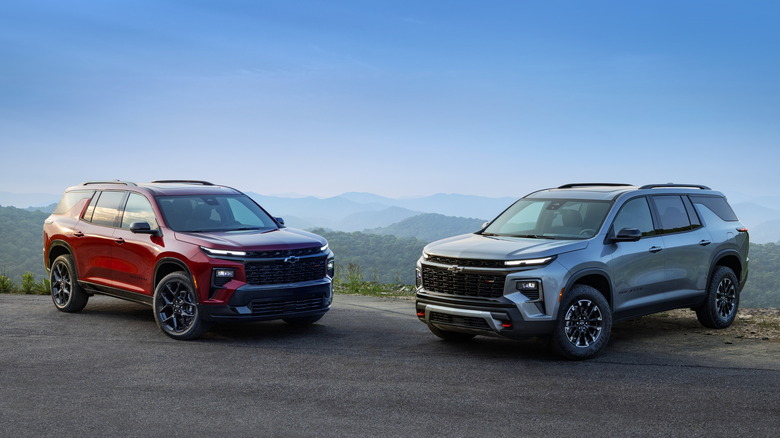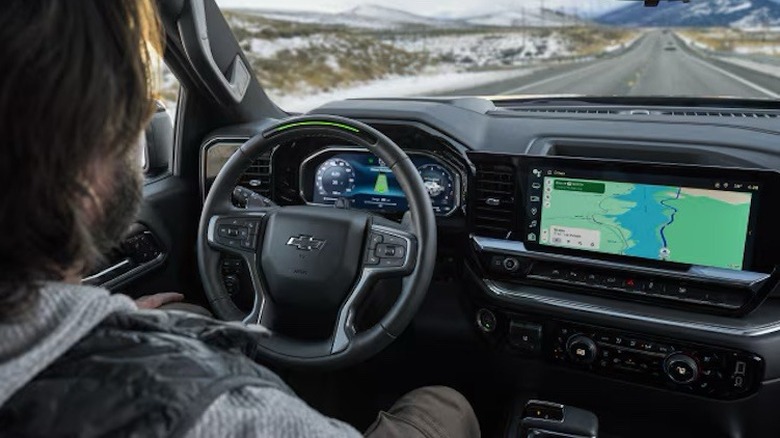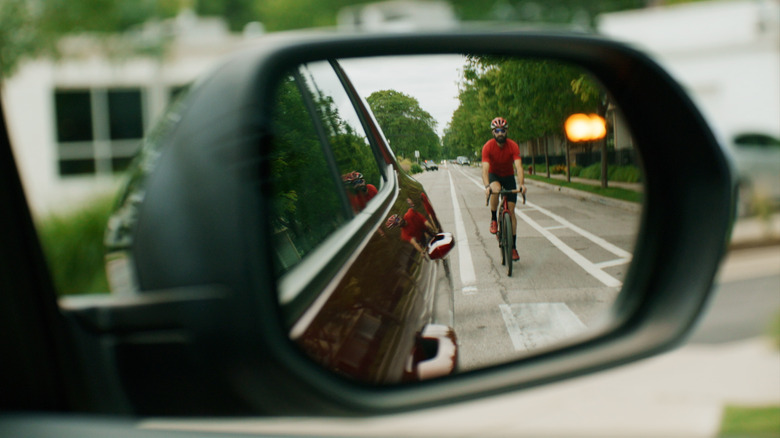Does The 2026 Chevy Traverse Have Hands-Free Driving?
Like most major automakers, Chevy offers all sorts of SUVs these days. There's an SUV or crossover for just about every family out there, from the compact and affordable Chevy Trax all the way up to the big boss Suburban. One of the larger models in its lineup is the Traverse, a family hauler with three rows of seating and space for up to eight passengers. The Traverse is getting closer to the Tahoe and Suburban as the years go by, with more capability and tech than ever before, but how does it do when it comes to advanced driver aids?
On base trim levels, there's a lot of modern equipment worth noting. The standard 2026 Traverse LT, for example, comes with automatic emergency braking, forward collision warning, lane-keep assist, lane-departure warning, front pedestrian and cyclist detection, rear parking assist, blind-spot monitoring, and a following distance indicator. And those are just the highlights — the Traverse also has other smaller features, like vibrating seat alerts, that help you stay aware of the potential hazards around you. For hands-free driving aids, though, you'll need to climb up the trim levels a bit or start speccing some options packages. That's where the Traverse starts offering GM's impressive Super Cruise hands-free driving system.
The ins and outs of Super Cruise
Super Cruise is available as an option on the Traverse's LT and Z71 trim levels and comes standard on the High Country and RS. Super Cruise can be used on pre-mapped, compatible roads and takes cruise control to a much higher level. Cameras, LiDAR, and other sensors allow Super Cruise to maintain your speed, navigate corners, and even slow your Traverse to a stop if necessary. GM boasts that this system is one of the few available that also works while towing a trailer.
I've had experience using Super Cruise in several GM products, like the latest GMC Sierra 1500, and it has impressed me every time. It's easy to activate, doesn't stray much from the center of the lane, and it manages to avoid triggering alerts for false positives like errant shadows. The adaptive cruise control system built into Super Cruise is also pretty good, maintaining a respectable following distance from other cars.
It should also be noted, though, that the 2026 Chevy Traverse's hands-free Super Cruise is connected to OnStar, a subscription-based service. Chevrolet includes a three-year subscription when you purchase a vehicle with Super Cruise. After that, you'll need to pay a $39.99 monthly fee to keep using Super Cruise and OnStar features like emergency services and in-car WiFi.
What Super Cruise doesn't do
Super Cruise is a hands-free driving system, yes. It'll even go as far as changing lanes for you if the road conditions allow for it. And it does provide a lot of relief when you're on a long road trip or when you're stuck in traffic during your daily commute. But like other driver-aid systems, it's not a replacement for keeping an eye on the road and the conditions around you. Even Chevy is happy to point out that Super Cruise still requires drivers to pay attention while using the system, so don't fall asleep or start reading a book while you're at the wheel.
There are also specific scenarios where you can't use the hands-free driving system at all. Super Cruise isn't available, for instance, when using Chevrolet's Teen Driver feature. That makes sense, as you likely want your teen paying attention if they're behind the wheel, so no Super Cruise for the kiddos. Other areas where Chevrolet recommends not using the system include construction zones, roads with unclear lane markings, in tunnels, areas with limited visibility, or in inclement weather like rain, fog, or snow. Typically, Super Cruise will deactivate on its own when it senses you're in a zone that doesn't fit its parameters.


